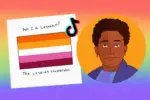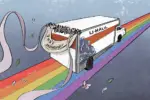You want to write something. Whether it’s the hundredth time or you’ve never expressed your thoughts in written word, you want to share a story. You notice in your previous work or in the content you read that there is an astonishing lack of representation. Large segments of this very diverse world are completely left out of the narrative. It doesn’t sit right with you, and you want to do something about it. You deem diversity important and want to tackle it head on, so you pick writing as your outlet for activism.
First things first. Make sure it is what you truly want to do. Your writing is a form of your voice, who you are as a person, reflecting your values and goals in life. If including characters in your writing that differ from you is not your cup of tea, don’t do it. A YouTuber named Shaelin, from ShaelinWrites, says it perfectly in her video on writing LGBTQIAP+: It is infinitely better to read about diverse groups by people who want to write about them than it is by people with a distaste for it. Write the things that spark your interest. And if it’s your prerogative to write on groups of people that differ from you, please do it. Diversity is important and can use your perspective.
https://www.youtube.com/watch?v=5puyH7gve0Q
Where do you go from there? Research. It’s commonly known that writing is born of reading. Reading is one form of research writers heavily rely on when tackling their craft, but more targeted research is another widely used tool. Fiction writers, journalists, essayists and writers of every genre have most likely had to Google a thing or two for their pieces. Whether it’s facts and figures or information about a community the author is not a member of, the creator needs a well of information to draw from to put words on paper. Signing up for writing is jumping on board for research, especially when writing on something you don’t know.
Research is a broad term that can leave people feeling clueless about where to begin. The obvious route is to scour the internet for articles on the specific group you are trying to learn about. Factual articles and personal testimonies grabbed online are great resources for a jumping-off point. You can’t terminate your search at articles from sources far removed from you, though. Authentic writing that accurately depicts people requires honest and personal information. The web is great for grasping a basic understanding, but conversations with real people actively in your life is the next step to make your inclusion feel true on the page.
Writing requires open dialogue with people — not a single person, but people. It’s great to talk to a friend your age about their experience in the community, but that’s only one view, one age group, one sex, one identity, one social class, and the list goes on. Research needs to be holistic to truly begin to form a picture. One person cannot give insight into the experience of a whole group of people. The struggles of one person are not going to be completely identical to that of another. Listening to multiple views will allow for dots to start being connected.
When gathering all of the stories to employ in your writing, remember that a narrative is not all good and not all bad. There is a mix. Life is full of ups and downs; people have highs and lows, struggles and joys. People are not flat, and characters need to represent that. Failing to include the various traits of diverse characters is a disservice. They deserve to be fully fleshed out like the non-marginalized characters you portray. Do not fall into the mistake of making a “minority” character a prop.
Having an intention with the members of society who often go unnoticed is important. Throwing a character in just for diversity points is the wrong route to go and doesn’t achieve the goal of inclusion. Go deep into the characters. Allow characters to have a purpose in your story. Having the character just state their marginalized status does not count as a motive for their presence in the work, especially if it is never touched upon again. Use their identity in a way that drives the plot. It doesn’t have to be stated up front when the character is introduced either; it can wait until the fact becomes relevant to your story.
Crafting a story is not a walk in the park, and adding in an element previously unknown to you makes it all the more daunting. In the face of fear, just do it. Write your story. You have the desire inside — act upon it. Know that you won’t be perfect. You are educating yourself on a complex topic and are bound to mess up. Try, fail and try again. Even members of marginalized communities don’t get representation correct on the first go. In “Disability: Art, Scholarship, and Activism,” Nicola Griffith writes of her struggles with incorporating disability into her writing, in spite of her own status as someone with a disability.
The key is to just write. Start small if you have to. If you don’t identify as part of the community you want to highlight, you can opt out of tackling the story from the first-person perspective. Another tactic is to condemn the notion of homogeneity from a non-marginalized main character’s perspective, which Francina Simone comments on in her YouTube Video “Diversity Isn’t about Adding POC or LGBT.” There are countless other ways to approach diversity and inclusion in writing. Find the one that works for you.
When your piece is written, have a member of the community you are trying to capture look at it. Again, one person cannot speak on behalf of the whole, but their comments can provide a good indication of whether you totally missed the mark or not. If you have the option, ask multiple people from that group to review your work. If the goal is to create space for unheard voices in writing, why not listen to as many of those voices as possible before publishing it for the world to read?
This is by no means the comprehensive guide on how to “properly” write diversity into your story. It is a constantly evolving learning process that requires time, effort and trial. Put in that work. Your voice matters. Your desire to uplift the voices of those often left out of writing is important. Your story, your writing, your creativity are valuable. So write, and write outside of your experience if it so compels you.
Disclaimer: I am a white woman living in the U.S. writing this piece. I largely identify in non-marginalized groups. I did not state my sexuality, economic class, level of physical ability, etc. If I were to speak with authority on any of those aspects in a work of writing, I would add a disclaimer in my author bio or some other place a reader can easily find it. It is important for writers to inform that they are not members of the groups of people they represent in writing.
















